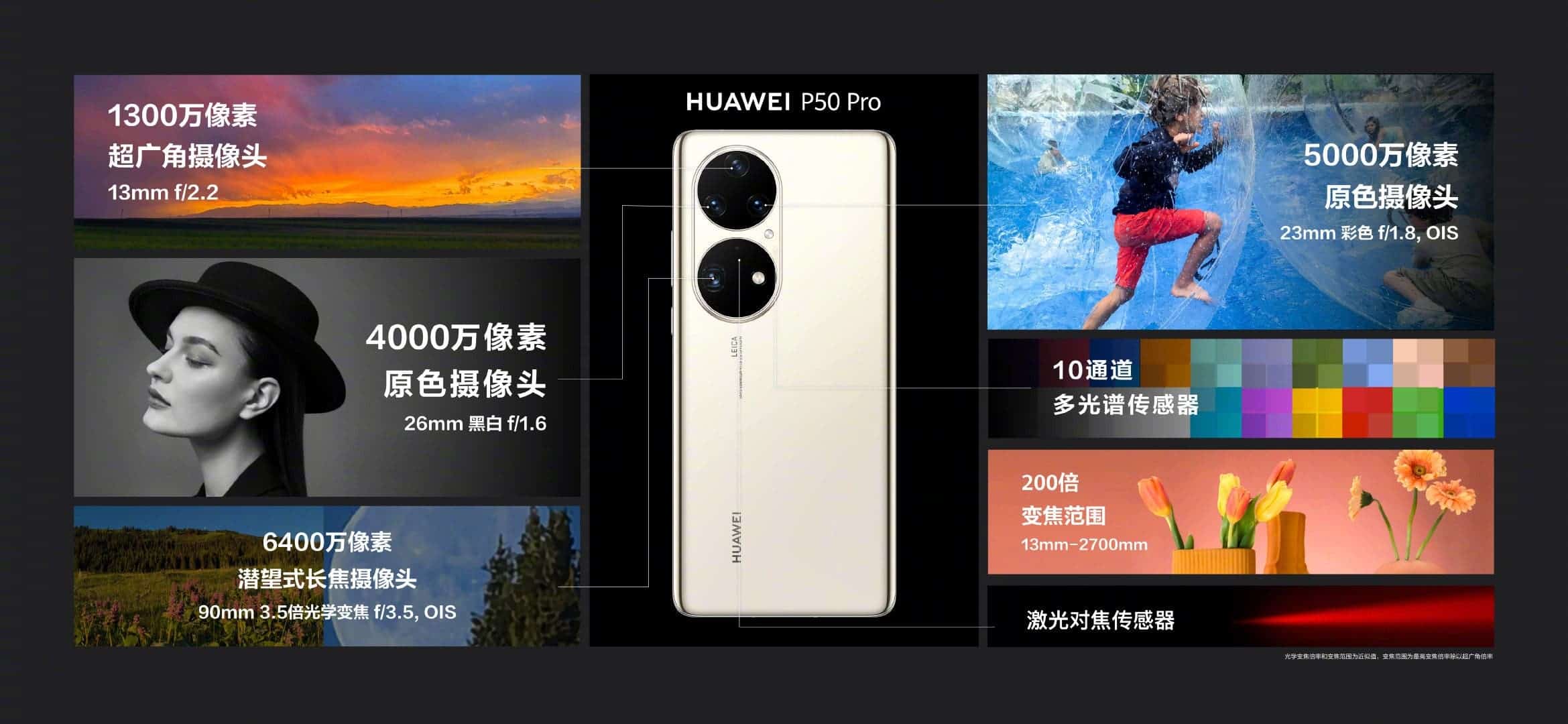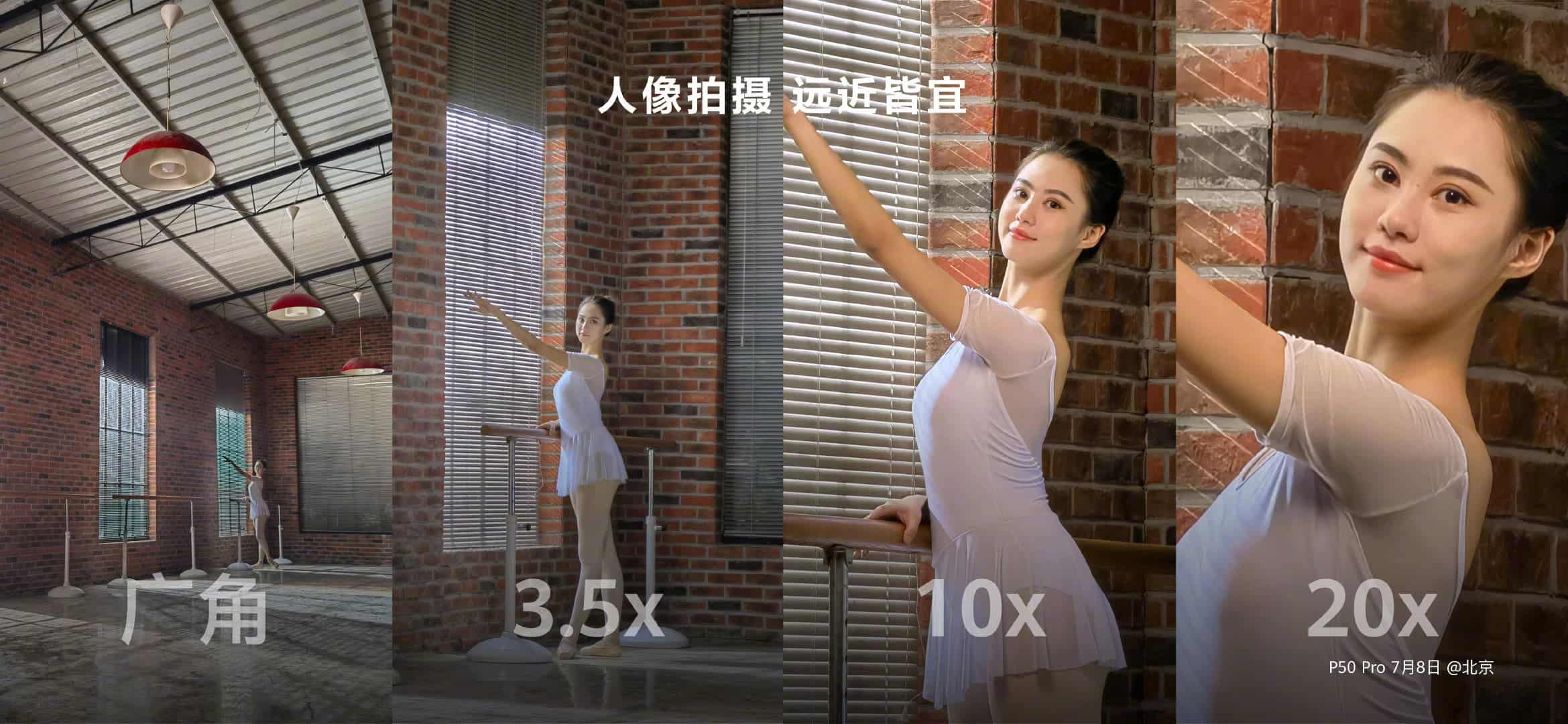The Huawei P50 series was delayed for so many months that we even doubted it would even come. It’s better later than never, one could say. Today, Huawei has finally brought its Huawei P50 series through the Huawei P50 and Huawei P50 Pro. There’s no Pro+ model this time. Both devices come with a very unique design, powerful cameras, and top-tier flagships. However, there is a small controversy in terms of connectivity. Something that can make these devices less appealing than main competitors. Without further ado, let’s dive into the specifications.
Huawei P50 and P50 Pro – Top Notch displays
After many leaks, the Huawei P50 series is finally here. Huawei found a way to bypass the ban and bring its new flagship contenders to the market. To start things, let’s check the displays of each device.
The Vanilla P50 gets a flat 6.5-inch OLED screen with a 2,700 x 1,225 pixels resolution. That’s an unusual resolution, and we can fit it on the Full HD+ category. The device packs a 90 Hz refresh rate and has a touch sampling rate of 300 Hz. This display offers cutting-edge features like HDR. The Huawei P50 Pro, on the other hand, has a larger 6.6-inch OLED panel with the very same resolution. The big difference is that this display is slightly curved. It also comes with HDR and 300 touch sampling rate but will feel smoother with a 120 Hz refresh rate. Both devices come with a center-aligned punch-hole which is a major change for Huawei flagships.
Flagship performance, but with a catch
It’s interesting to see that Huawei managed to bring a Qualcomm Snapdragon 888-powered smartphone. The company also is using the last batch of its Kirin 9000 SoCs. However, there is a huge drawback in the P50 series. These devices only support 4G connectivity. That’s pretty crazy since both SoCs are capable of 5G and Huawei was one of the companies pushing 5G connectivity forward. With so many flagships betting on 5G connectivity, we don’t know if the P50 series will have a chance in markets where 5G is strong, which includes China.
The Huawei P50 Pro is available in both Snapdragon 888 and Kirin 9000 options. There will be variants with 8 GB of RAM and 128 GB or 256 GB of Internal Storage. The device comes with a Nano Memory Card Slot for more than 256 GB of Storage. There is also an option with 12 GB of RAM and 512 GB of Internal Storage. The Huawei P50 will only be available in the SD888 flavor. Worth noting that there will be two configurations with 8 GB of RAM and 128 GB of storage or 256 GB of Storage. This model, however, comes with support for a conventional microSD card. Both smartphones run HarmonyOS 2.0 straight out of the box.
Leica-powered cameras are back
Despite controversies suggesting the end of the partnership between Leica and Huawei, the P50 series still packs Leica-branded cameras. Both units come with 10-channel color sensors and improved telephoto modules. The Huawei P50 is equipped with the same main camera – a 50 MP sensor sitting behind a 23 mm lens with an f/1.8 aperture and Optical Image Stabilization. The Huawei P50 Pro has a 40 MP Black and White camera. This module comes with a 26 mm lens and an f/1.6 aperture. There’s also a 13 MP ultrawide angle camera with 13mm and f/2.2 aperture. Both cameras come with Laser Autofocus.
For extra zoom capabilities, there is a periscope lens. It has only a 90mm focal length but comes with a 64MP sensor that is capable to offer digital zoom with up to 2,700mm. This lens also comes with OIS and an f/3.5 aperture. The P50 also comes with a periscope lens. It comes with a 125mm focal length, 5x zoom, and has a modest 12 MP module with OIS. It also comes with an ultrawide lens with a 13MP resolution. Both devices come with a 13 MP selfie camera.
The Huawei P50 Pro comes with XD Fusion Pro (Yes, XD). It’s an image fusion system that doubles the amount of gathered light compared to the Huawei P40 Pro and increases dynamic range by 28 percent. Both phones top out at 4K video capture, and unfortunately, there is no 8K option. For slow-motion clips, they can do 1080 @ 960 frames per second.
Battery and other features
The Huawei P50 has a 4,100 mAh battery while the P50 Pro features a 4,360 mAh battery. Both devices offer 66 W wired charging over the USB-C port and comes with a 50 W wireless charging. Both devices come with stereo speakers and IP68 certification for dust and water resistance.
Huawei P50 series – Availability and Pricing
The Huawei P50 models will be available worldwide. However, the global launch dates have not been confirmed.
In China, the Huawei P50 Pro will go on pre-order tomorrow and the first units will ship on August 12. The cheapest model has a Snapdragon 888 SoC with 8 GB of RAM and 128 GB of Internal Storage. This variant will cost CNY 6,000 ($930/€780). The variant with 256 GB and 512 GB models come with a choice of Snapdragon 888 or Kirin 9000 chips, they cost CNY 6,500 and CNY 7,500, respectively. The variant with 12 GB of RAM and 512 GB of storage will be available in September. All variants will be available in two colorways.
The Huawei P50 will be available in September. The 8 GB RAM option with 128 GB of Internal Storage costs CNY 4,500 (($700/€590). The variant with 8 GB of RAM and 256 GB of Storage will cost CNY 5,000 ($774 / €650).
The company will also sell fancy cases with matching wallpapers. There is also a case that offers a ring light that can act as a LED flash for selfies.





















If introduced in India..Only 4G would not sell..5 G would have a good chance for Hi End buyers. who normally take Apple- though Huawei 😎😢
Unless they put this like one plus price range as this phone doesn't have direct access to Google play store